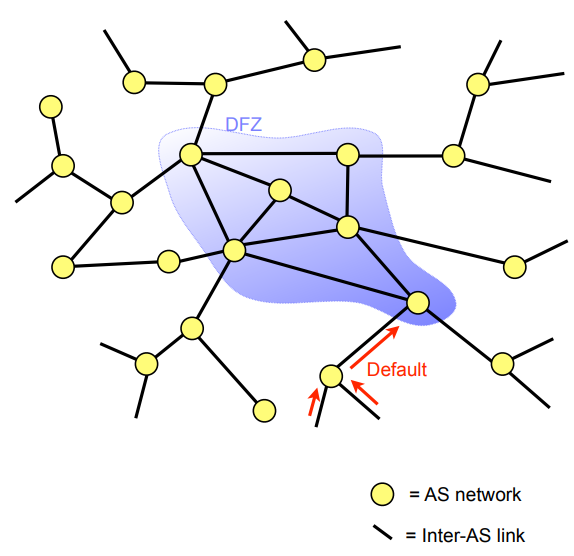All the internet practically is, is a network of networks:
- Each individual network is called an Autonomous System (AS)
- Each network is a separate routing domain
Inter-domain routing is the problem of finding the best path from the source to the destination network
- We treat each separate network/AS as a node on our routing graph (“AS Topology Graph”)
- We treat each connection as edges of our graph
Routing in the Core of the Internet
Networks on the Edge (Note: Routing at the Edge) can often use a default route for much of their traffic, however core networks need a full routing table, this zone is called the:
Default Free Zone (DFZ)
- With enough interconnections, they must store routing information about the broad network topology
- Many possible paths – need information to choose the most appropriate

AS-level topology is flattening → meaning we get increasingly rich interconnections
Large Internet Exchange Points (IXPs) are becoming commonplace Ex: London Internet Exchange:
-
850 diff networks interconnected
-
4.3 Tbps of traffic
Routing Policy
Interdomain routing is between competitors
- Each AS is independently operated and may compete for customers
- Business, political, and economic relationships influence routing This means Routing must consider policy
- Policy restrictions on who can determine the network topology
- Policy restrictions on which route traffic should follow between a particular source and destination
- Policy restrictions might prioritise non-shortest path routes
- Do you prioritise cost, bandwidth, or latency when choosing a route?
- Traffic between certain networks may be prohibiting from passing through other networks
- Traffic between certain regions should avoid other regions
Uses Border Gateway Protocol (BGP) Border Gateway Protocol (BGP)